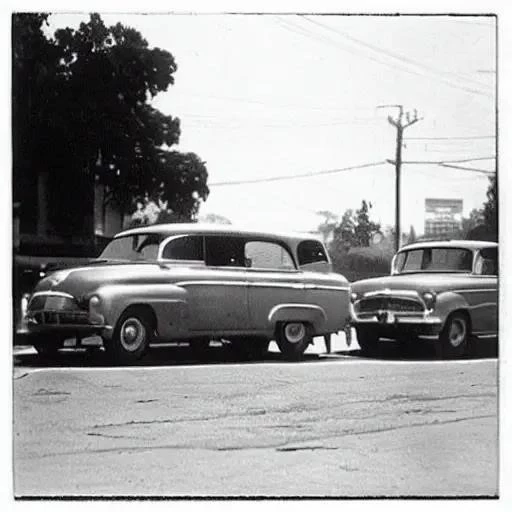In the vibrant tapestry of India’s automotive landscape, 2015 wasn’t just another year; it was a pivotal moment, a quiet revolution unfolding on asphalt arteries and bustling urban thoroughfares․ While the nation had long been synonymous with manual gearboxes, a subtle yet profound transformation was meticulously underway, driven by the burgeoning popularity of automatic transmission sedan cars․ This period marked a definitive pivot in consumer preference, signaling a profound shift from a utilitarian approach to driving towards an embrace of unparalleled convenience and refined comfort, fundamentally reshaping the future trajectory of personal mobility across the subcontinent․
The burgeoning metropolitan centers, characterized by their notoriously dense traffic and increasingly sophisticated populace, found an undeniable allure in the automatic sedan․ Gone were the days of ceaseless clutch work and manual gear changes, replaced by a smoother, less fatiguing driving experience that spoke directly to the aspirations of a rising middle class․ This wasn’t merely about technological advancement; it was about lifestyle enhancement, a significant upgrade promising effortless navigation through urban chaos and a more relaxed commute, thereby significantly impacting daily routines and driving enjoyment for thousands․ The stage was undeniably set for an automotive renaissance․
| Category | Details for Automatic Transmission Sedans in India (circa 2015) |
|---|---|
| Market Trend Drivers | Increasing urbanization, severe traffic congestion in metros, rising disposable incomes, growing demand for driving convenience, evolving consumer aspirations towards premium features․ |
| Key Market Characteristics | Automatic transmissions transitioning from luxury segment to mass-market sedans․ Focus on AMT (Automated Manual Transmission) technology for affordability alongside traditional AT (Automatic Transmission) for smoother shifts․ |
| Popular Models & Examples | Maruti Suzuki Ciaz (AMT/AT), Honda City (CVT), Hyundai Verna (AT), Volkswagen Vento (DSG/AT), Skoda Rapid (DSG/AT)․ These models played crucial roles in popularizing the segment․ |
| Consumer Perception | Initially seen as less fuel-efficient or expensive, but rapidly shifting towards appreciating convenience, ease of driving, and stress reduction, especially in city conditions․ |
| Market Impact & Outlook | 2015 was a foundational year, laying the groundwork for widespread automatic adoption․ Manufacturers began prioritizing AT variants, anticipating substantial future growth and market penetration․ |
| Reference Link | Autocar India Archives (General Automotive News) |
The Dawn of Convenience: Why 2015 Mattered
By 2015, Indian automakers, keenly observing shifting global trends and domestic demands, began strategically integrating automatic transmission options into their most popular sedan offerings․ This wasn’t a tentative foray but a committed investment in a segment predicted to soar․ Manufacturers like Maruti Suzuki, Honda, and Hyundai, recognizing the immense potential, launched or significantly upgraded models like the Ciaz, City, and Verna with sophisticated automatic gearboxes, including Continuously Variable Transmissions (CVT) and even advanced dual-clutch transmissions (DSG) in higher segments․ This strategic move was incredibly effective, democratizing a technology previously confined to premium vehicles and making it accessible to a broader demographic․
Automotive experts at the time highlighted the transformative power of this shift․ “The Indian driver was ready for an upgrade,” remarked an industry analyst in a 2015 interview, “and automatic transmissions offered that precise blend of modernity, comfort, and ease․ It wasn’t just about avoiding the clutch; it was about a better quality of life behind the wheel․” This sentiment resonated deeply with urban commuters, who, grappling with ever-increasing traffic snarls, found solace in the smooth, uninterrupted acceleration provided by these advanced transmissions․ Driving, once a chore, was steadily evolving into a more pleasurable and less demanding activity․
Driving Forward: The Lasting Legacy
The groundwork meticulously laid in 2015 has undeniably shaped the present and future of the Indian automotive market․ The acceptance and eventual embrace of automatic sedans by the Indian consumer proved to be a powerful precursor to an even broader adoption of automated driving technologies․ This initial success provided manufacturers with invaluable data and confidence, propelling further investment into advanced driver-assistance systems (ADAS) and, ultimately, paving the way for the electric vehicle revolution, which inherently relies on automatic drive systems․
Looking ahead, the legacy of 2015 serves as a potent reminder of India’s dynamic market and its readiness to adopt innovations that enhance everyday living․ The burgeoning trend of automatic transmission vehicles continues unabated, with nearly every new model, irrespective of segment, offering an automatic option․ This enduring evolution, seeded in the mid-2010s, stands as a testament to the forward-thinking strategies of automakers and the progressive aspirations of Indian consumers, promising an even more convenient, safer, and technologically integrated driving experience for generations to come․ The journey, confidently steered by the choices made in that pivotal year, is truly exciting․






